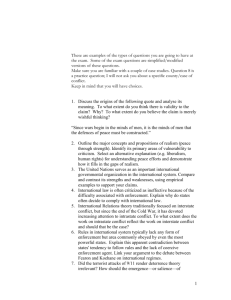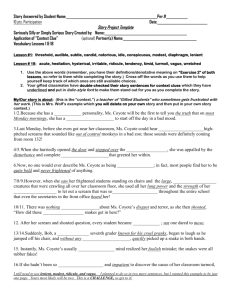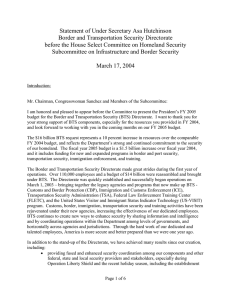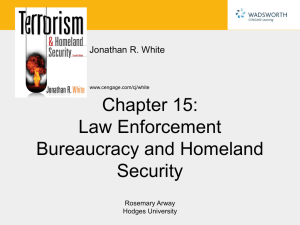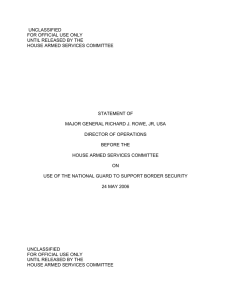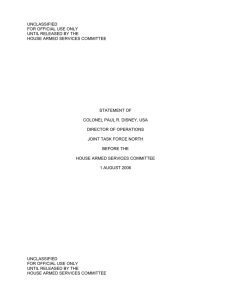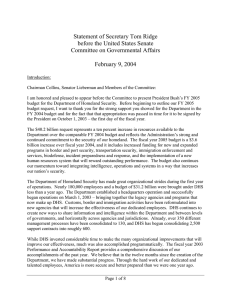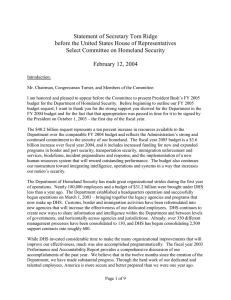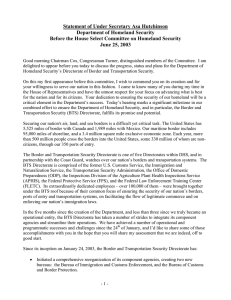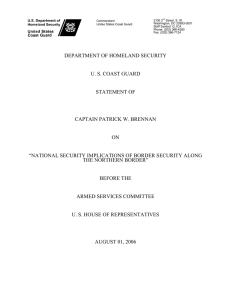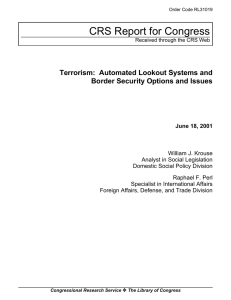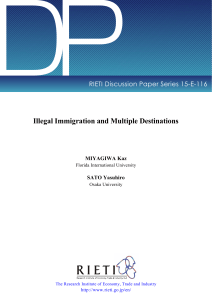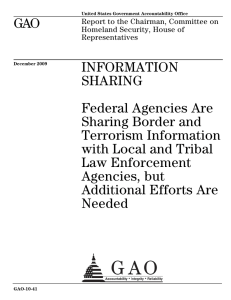Research findings for immigration border issues
advertisement
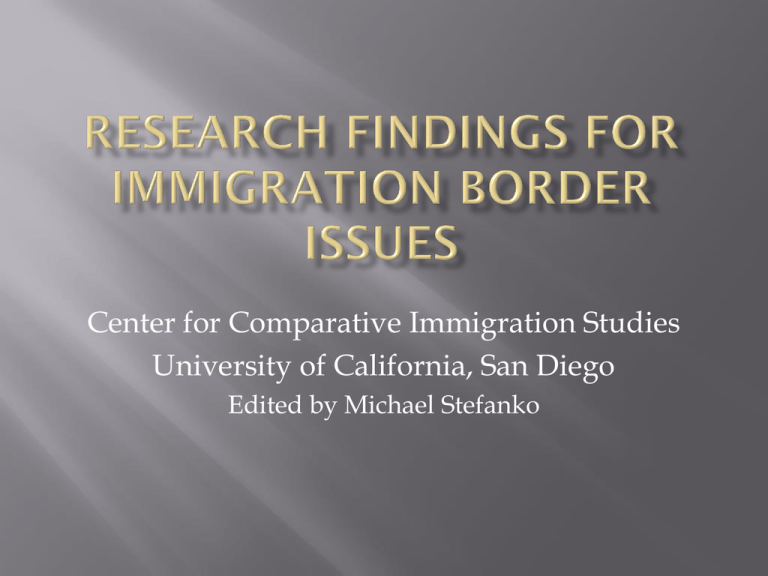
Center for Comparative Immigration Studies University of California, San Diego Edited by Michael Stefanko 1986 1990 1993 1994 1995 1996 2006 Immigration Reform and Control Act Immigration Act of 1990 Operation Hold the Line; El Paso, TX Operation Gatekeeper; San Diego, CA Operation Safeguard; Nogales, AZ Operation Rio Grande; Southeast TX Secure Border Initiative Secure Fence Act Operation Jumpstart Operation Streamline (Sisco and Hicken, Chapter 2 in Four Generations, 2009) The following are from an article in press: (Hicken, Fischbein, Lisle) regarding a survey of Tlacuitapenses Between 1992 and 2008 the number of personhours of border agents increased by a factor of four , the annual enforcement budget increased from $1 billion to $9.5 billion Looked at two effects: remote deterrence and physical deterrence Unauthorized Mexican residents increased from 2.5 million in 1996 to 7 million in 20072010 Number of unauthorized immigrants has decreased significantly in the current economic climate Remote deterrence: evidence mixed – selfreported (Tlacuitapense ) intention to migrate down, but reasons cited are more gang violence and banditry than border enforcement Physical deterrence: 9 of 10 surveyed succeeded ; clandestine entry through ports of entry more expensive but safer than through deserts Variable Model 1 Model 2 Model 3 Model 4 Model 5 Model 6 Age 1.063 0.954 1.039 1.074 1.069 0.943 Age 2 0.998 1 0.999 0.998 0.998 1 Male 3.062*** 3.020*** 2.879*** 3.114*** 3.034*** 2.851*** Has ever migrated to the US 5.132*** 4.880*** 5.156*** 4.924*** 5.164*** 4.714*** Married 0.54 0.506 0.517 0.506 0.551 0.449 Has Children 0.326*** 0.355** 0.347** 0.341** 0.324*** 0.396** Number of family in the US 1.221*** 1.224*** 1.217*** 1.213*** 1.218*** 1.210*** Wealth in Mexico 3.927 3.576 4.124 4.09 4.008 4.375 Knows someone who died 2.823** Very Dangerous to cross 3.219** 0.544 Difficult to Cross 0.496* 2.493 Knowledge of Border Enforcement 2.921 0.931 0.919 constant 0.016* 0.04 0.034 0.006** 0.015* 0.029 N 358 357 355 350 358 349 r2_p 0.183 0.202 0.19 0.19 0.184 0.221 Robust predictors: male, previous migration, no children, family in US • Apprehended 44 percent of the time between 2002 and 2010 •Over 90 percent eventually succeed in crossing •Factors predicting success (from a regression analysis): previous migration experience, month crossed (Oct-Dec) , running out of money •Non-significant factors: gender, location, port of entry or not, with a coyote •Major effect: increases in line-watch hours is matched by increases in coyote fees (more demand for coyote services) Mode of Entry 1965-1986 1986-1993 1994-2001 2002-2010 Overall Walking 60.5% 52.4% 57.4% 60.0% 57.9% Swimming 23.2% 11.9% 14.9% 3.1% 12.2% Hidden in Vehicle 0.0% 16.7% 6.4% 21.5% 12.2% Fake/Borrowed Documents 9.3% 14.3% 19.1% 12.3% 13.7% Other 7.0% 4.8% 2.1% 3.1% 4.1% N=43 N=42 N=47 N=65 N=197 •Legal ports of entry: safer, less likely to be apprehended (averaged of 0.5 times versus 0.9 times), more expensive (average fee $3,314 – N=17, versus average coyote fee of $1,791 – N= 37 for desert/mountains •Family in US can fund crossings at ports of entry •For desert/mountains: More concern about Mother Nature and bandits than fence or Border Patrol/National Guard •80 percent of those surveyed in Tlacuitapa knew someone who had died in a border crossing Increased enforcement is leading to longer stays in the US Longer stays means male heads of household are bringing dependents to US sooner US-born children and wives are strong supporters of staying permanently More than one-third of those surveyed (1 in 10 of undocumented) owned property in the US Erratic enforcement of interior policies (such as against businesses) does not effect underlining incentive structure for migrating

